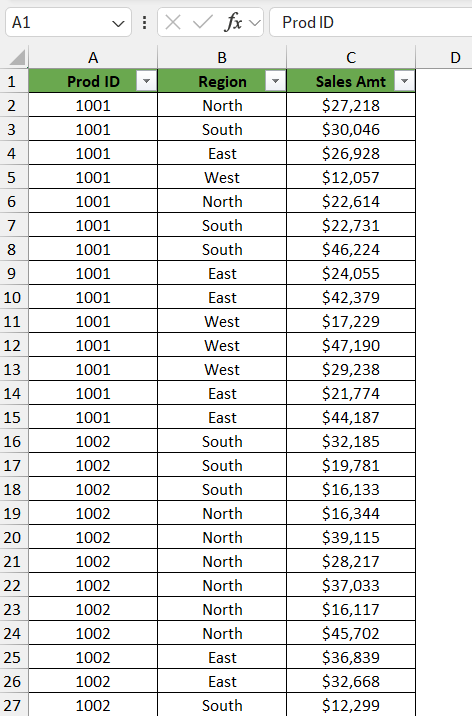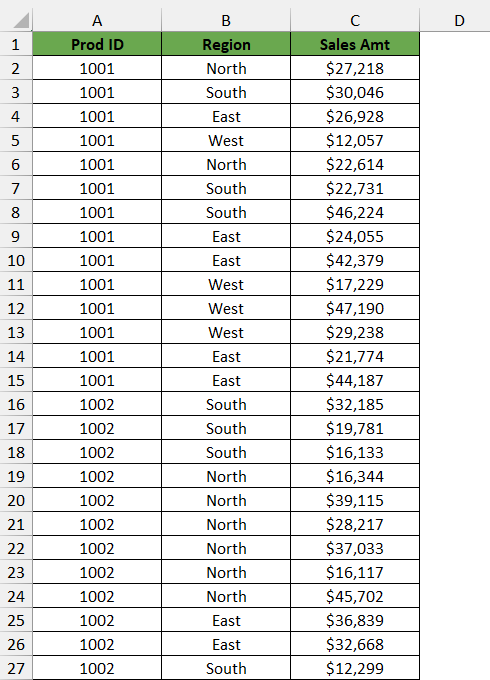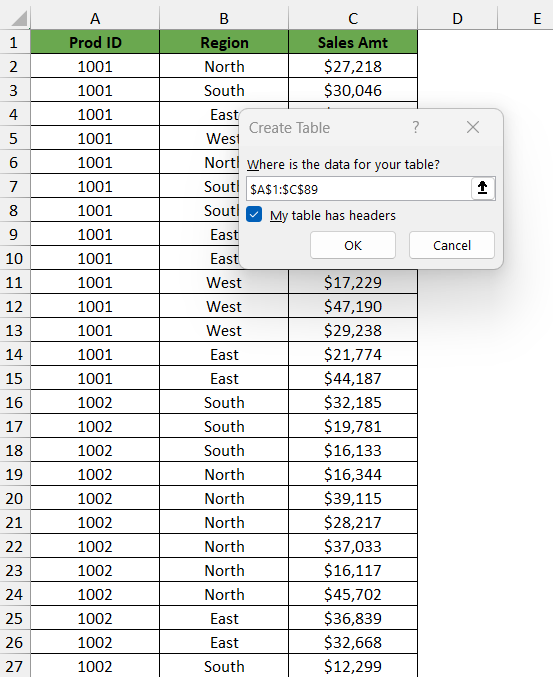Understanding unfiltering in Microsoft Excel is crucial for anyone who regularly works with data. When the need arises to step back from the specifics and regain a view of the entire dataset, unfiltering can swiftly restore your spreadsheet to its unfiltered state. This article will guide you through the simple steps required to remove applied filters, so you can analyze your data without restrictions.
Key Takeaways
- Excel filters enable users to display data meeting specific criteria, aiding analysis without permanent changes.
- Unfilter shortcuts swiftly remove applied filters, maintaining data integrity and facilitating a full dataset view.
- Keyboard shortcuts in Excel enhance speed, precision, and multitasking, and reduce strain, optimizing workflow efficiency.
- Understanding the difference between clearing all filters and single-column filters empowers users to manage datasets effectively, saving time and streamlining analysis.
Mastering Excel’s Unfiltering Shortcuts
What is an Excel Filter?
In Microsoft Excel, the filter feature allows users to display only the data that meets certain criteria while temporarily hiding the other data. This can be useful for analyzing data sets and focusing on specific subsets of information without permanently altering the data
Step-by-Step Guide to Utilizing Unfilter Shortcuts
Filters in Excel are a powerful tool for managing and navigating datasets, especially when dealing with large volumes of information. By applying filters to your columns, you can quickly find and display only the rows that meet your criteria, which can significantly enhance your ability to analyze and understand your data. However, there are times when you need to revert to a full view of your data. This is where unfiltered shortcuts become invaluable, providing a quick and reliable method to remove all applied filters with minimal effort.
Here’s a simple, step-by-step guide on how to use the Excel Unfilter shortcuts:
STEP 1: Select Your Data Range.
Before utilizing the Unfilter shortcut, ensure that you are currently within the range or have selected the dataset you applied filters to. If you have just used filters, your selection is likely to already be active.
STEP 2: Activate the Unfilter Shortcut
On Windows, simply press Ctrl + Shift + L. For Mac users, the equivalent shortcut is Command + Shift + L
STEP 3: Check the Data.
Once you have pressed the shortcut, check to make sure all filters have been removed. The filter icons at the top of your columns should no longer be highlighted or should have reverted back to their default state, indicating that the entire data set is now visible.
After you’ve filtered your data, it’s always a good practice to quickly verify that all filters were successfully cleared and that no data was lost or hidden in the process.
It’s important to note that this shortcut toggles the filter function. If the filters are not applied, using this shortcut will instead apply them. That’s why it’s crucial to use this shortcut carefully and check the status of your filters before and after using it.
Mastering this simple yet powerful technique will speed up your workflow and help maintain the integrity of your data analysis process in Excel.
Discover the Power of Keyboard Shortcuts for Efficiency
In the realm of Excel, proficiency in keyboard shortcuts is akin to having superpowers at your fingertips – they enable you to navigate, format, and manipulate data with lightning-fast precision. Excel experts often tout keyboard shortcuts as the most efficient way to enhance productivity, minimize reliance on the mouse, and significantly reduce the time taken to complete tasks.
Why Keyboard Shortcuts Matter:
- Speed: Keyboard shortcuts, such as “Alt + A + C” for unfiltering data, allow for rapid completion of tasks that would otherwise require multiple clicks through menus.
- Precision: They help you execute commands exactly when and where you need them without the imprecision that sometimes accompanies mouse usage.
- Multitasking: Keyboard shortcuts facilitate multitasking by keeping your hands centered on the keyboard, thus avoiding the constant back-and-forth with the mouse.
- Reduces Strain: By limiting mouse usage, shortcuts can help reduce the risk of repetitive strain injuries often associated with excessive clicking.
Essential Keyboard Shortcuts for Unfiltering and More:
- Unfilter: “Alt + A + C” quickly removes all applied filters from your selected range.
- Copy: “Ctrl + C” copies selected cells or data.
- Paste: “Ctrl + V” pastes copied data into your chosen location.
- Undo: “Ctrl + Z” undoes your last action, a powerful feature when needing to backtrack quickly.
These are just the tip of the iceberg, as Excel is rich with keyboard shortcuts designed to streamline every aspect of the data management process. They span from formatting cells and editing formulas, to navigating within a workbook and toggling between different sheets.
Speed up Your Workflow with Clear Filter Strategies
When you’re knee-deep in data analysis, the ability to quickly switch between a filtered view and the complete dataset is crucial. Understanding the difference between clearing all filters and removing filters from a single column can help you work more efficiently in Excel.
- To clear all filters in a dataset, you can select the ‘Data’ tab and click ‘Clear’ in the ‘Sort & Filter’ group.
- Keyboard Shortcut: “Alt + A + C” can be used for a swift clearing of all filters.
- Clearing all filters is recommended when preparing to share your worksheet or when you want to get a full overview of the available data without previous filtering constraints.
- To clear the filter from a single column, click the filter drop-down in the column header and select ‘Clear Filter From [Column Name]’.
- Keyboard Shortcut: You can press “Alt + Down Arrow” to open the filter menu for the active column and then ‘E’ to clear the filter for just that column.
- Removing single-column filters is useful when you need to adjust or correct the data in a specific part of your analysis without losing the context provided by other active filters.
Knowing when and how to use these two methods of controlling filters will boost your productivity in Excel. Clearing all filters revives your full dataset in moments, while the more targeted approach of clearing single-column filters lets you fine-tune your data view with pinpoint accuracy. Efficiently toggling between these methods as part of your data management strategy can lead to deeper insights and a smoother analytical process.
Tips for Efficiently Clearing Filters in Large Datasets
Working with large datasets in Excel can quickly become overwhelming, especially when filters are slowing down performance. However, with a strategic approach, it’s possible to manage and clear filters more efficiently, saving time and frustration. Here are some invaluable tips to help you handle filters in extensive spreadsheets:
- Create a Backup: Before making significant changes like clearing all filters, consider saving a copy of your workbook. Large datasets often contain crucial information, and having a backup ensures that you can revert to the previous state if needed.
- Convert to an Excel Table: Excel Tables (created by pressing
Ctrl + T) offer increased functionality, including improved filtering and sorting. They are optimized to handle data more efficiently than standard ranges.
- Clear All Filters at Once: Rather than clearing filters one by one, which can be time-consuming and error-prone, use the “Clear All” feature. This can be done by selecting the ‘Data’ tab, then clicking ‘Clear’ in the ‘Sort & Filter’ group. Or use the “Alt + A + C” keyboard shortcut for immediate action.
- Remove Unnecessary Data: Prune your dataset by removing obsolete or irrelevant rows and columns. This reduces the volume of data that Excel needs to process, thereby improving performance.
- Keep Data Clean and Consistent: Ensure your data is formatted consistently throughout the dataset. Uniform data types and formats will allow filters to work more efficiently.
- Batch Processing: If you need to clear filters frequently, try batching this action with other processes. For instance, clear filters before you perform any batch updates or insertions to avoid the filters slowing down these operations.
- Keyboard Shortcuts: Familiarize yourself with and utilize keyboard shortcuts for filtering and unfiltering. “Alt + Down Arrow” opens the filter menu for the active column, while “Alt + A + C” removes all filters.
- Use Advanced Filtering Options: When dealing with complex filtering, use Excel’s ‘Advanced Filter’ functionality to create more sophisticated filters that can be easily applied and removed.
- Disable Automatic Calculations: If your workbook contains formulas, switch Excel’s calculation option to ‘Manual’ (found under Formulas > Calculation Options) while you apply or clear filters. This prevents Excel from recalculating all dependencies every time a change is made, which can greatly increase the speed for large datasets.
- Construct Defined Names and Ranges: By defining names and ranges that you filter frequently, you can quickly apply and remove filters without having to select the entire dataset manually.
- Leverage Excel’s Filter Options: Custom filters can speed up the filtering process. For example, filtering by color, using number or text filters, and date filters helps to narrow down the criteria without having to manually sift through the data.
These strategies can help mitigate the lag that accompanies filtering and unfiltering large datasets in Excel. A combination of preparation, proper data management, and the use of Excel’s powerful built-in tools can transform a potentially cumbersome process into a smooth and efficient task.
FAQs
What is the Unfilter Shortcut in Excel?
The Unfilter shortcut in Excel is a keyboard command—specifically “Alt + A + C”—used to rapidly remove all filters from a selected range of cells within a spreadsheet. This shortcut enhances data management efficiency and accuracy by preventing the accidental deletion or oversight of data that can occur when filters are cleared manually.
Can Unfilter Shortcuts be Applied to Cells Without Active Filters?
No, Unfilter shortcuts cannot be applied to cells without active filters. The shortcut ‘Ctrl + Shift + L’ on Windows or ‘Command + Shift + L’ on Mac is specifically designed to toggle filters off on cells that already have them applied. If the selected cells are unfiltered to begin with, using this shortcut will have no effect on those cells.
How Do You Clear Multiple Filters at Once in Excel?
To clear multiple filters at once in Excel, first select any cell within the range that has the filtered data. Then, go to the Data tab and click on the “Clear” button. From the drop-down menu, choose “Clear Filters,” and this action will remove all filters from your data at once.
Are There Any Limitations to Clearing Filters with Keyboard Shortcuts?
Yes, there are limitations to clearing filters using keyboard shortcuts in Excel. These shortcuts typically only work within the application and may not be effective if there are issues with Excel’s functionality or if the spreadsheet is protected or structured in a way that restricts certain actions. Additionally, keyboard shortcuts can vary based on the version of Excel and the operating system used, which might limit their accessibility or effectiveness for some users.
John Michaloudis is a former accountant and finance analyst at General Electric, a Microsoft MVP since 2020, an Amazon #1 bestselling author of 4 Microsoft Excel books and teacher of Microsoft Excel & Office over at his flagship MyExcelOnline Academy Online Course.











